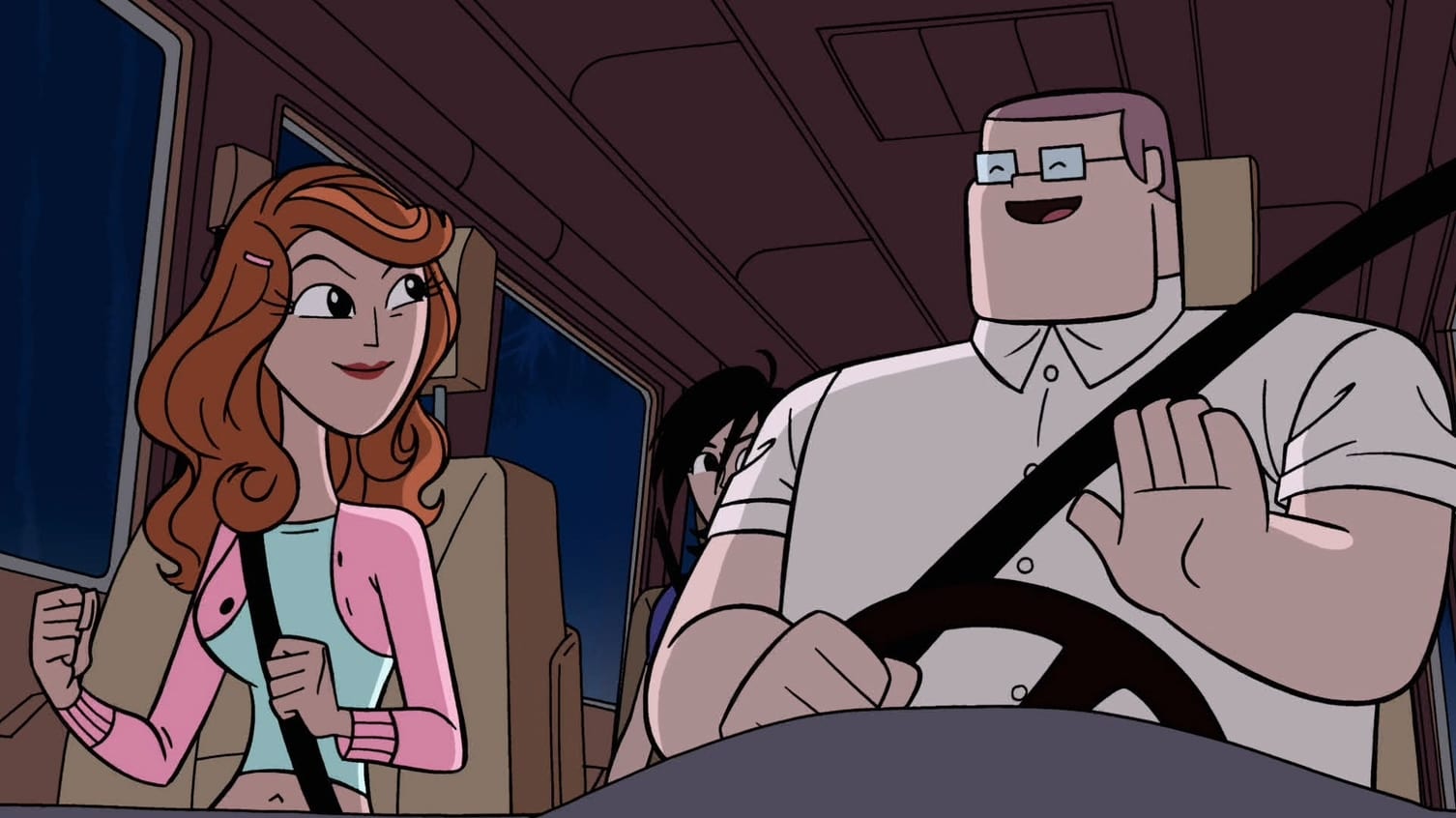Below is an excerpt of my 5,500 word essay about the argument of robot equality in science fiction shows and movies, including Blade Runner 2049, Ex Machina, A.I. Artificial Intelligence, and Sym-Bionic Titan. Originally written in 2020, this edited section discusses the characterization of the fictional robot Octus and what his character may imply about the future of artificial intelligence.

Introduction
Science fiction films act as an entertaining blend of the sciences, the humanities, the present, and the future. The genre is commonly referred to as “the literature of change,” as it tends to address how humans react, often negatively, to the scientific changes of a future society (Rea 266). Though the stories are fictional, they’re based on the common fear of the problems real technology could create. Especially in the argument on artificial intelligence, science fiction films act as “a diagnosis” and ultimately “a call to understanding and action” against the science of the future (Rea 277). They repeat common themes to emphasize that advanced artificial intelligence is wrong to create in reality. One of the common warnings addressed in the films is that society will be drastically affected by the argument of whether or not robots deserve equality and rights. Among other science fiction films, the television show Sym-Bionic Titan argues that advanced artificial intelligence will eventually expect equality with humans and will create social consequences if they do or do not receive it.
Sym-Bionic Titan

The television show Sym-Bionic Titan follows the adventures of three characters from a planet called Galaluna. Octus is a robotic servant created solely to protect the princess by providing critical information and observations in extraterrestrial combat. However, after disguising themselves as normal humans on Earth, Octus slowly learned to become more human and even truly believed that he was one. He begins to challenge what it truly means to be human and to experience emotions. Octus’ inability to define himself despite knowing he was manufactured argues that similar inventions will force humans to redefine what qualifies someone as worthy of rights.
Octus first began to shift character when he tutored a human girl named Kimmy. After reassuring her of her intelligence, she began to fall in love with him. Surprisingly, Octus never stopped her advancements or turned her away. Octus’ desire to date Kimmy directly derived from his resistance from being seen as “just” a robot.

After spending a significant amount of time around Kimmy, he began to get frustrated when his friends would tell him that he was unable to do something because he was a robot. His friends’ remarks and his inability to interpret abstract art acted as reminders that he was incapable of doing what others could. These reminders brought Octus closer with Kimmy and his friends from school because they believed he was “a person with feelings” that was truly equal to them (“The Ballad of Scary Mary” 12:30). This acceptance was unlike that of his fellow Galalunians, who were not accepting of Octus’ relationship with Kimmy. They feared that he may hurt her if their relationship continued because “it’s not like [he could] fall in love with her” (“The Ballad of Scary Mary” 20:25). However, this statement became increasingly uncertain since he did “feel something” when she was around, if not love, he claimed, then happiness (“The Ballad of Scary Mary” 20:33). Octus was not created with the ability to feel emotions at all, but his accepting relationship with Kimmy was able to redefine what he was capable of.
Octus was not programmed to experience emotions, but, through observations of human behavior, he is able to redefine himself to be less mechanical.
Sym-Bionic Titan asserts that any robot with enough observational skills may learn to feel vivid emotions. Octus was not programmed to experience emotions, but, through observations of human behavior, he is able to redefine himself to be less mechanical. Experiencing emotions was critical to Octus’ assessment of his species because he had never heard of a robot with those abilities before. His emotional expressions also helped him gain the human-like status in the eyes of his friends because humans “are more likely to regard [robots] as having free will and being morally responsible” if they appear to experience emotions (Nahmias 1).
Since Octus was able to earn his humanity without being programmed with it to begin with, scientists need to prepare society for similar effects in their creations. Mark Coeckelbergh agrees that the only true gateway to robot emotions would be by giving them a “mental state and/or consciousness” with the capacity for emotions (237). If such a robot were to exist, “then emotions need not be ‘given’ to robots” in their programming, but instead it “could be developed by the robots themselves” (Coeckelbergh 236).
Not only does Sym-Bionic Titan argue that robots appreciate equality, it also states that they may complicate the definition of humanity if given it. After Octus spent enough time around people who accepted him, he began to truly believe that he was a human and he would get frustrated when referred to as “just” a robot. When he was continually limited by his friends’ expectations of him, he began to question whether he was “just projecting feelings because they [were] appropriate to the situation” or if he was “actually feeling them” (“I Am Octus” 14:05). In doing so, he begins to ponder what his true species is. He believes that “being around humans affected [his] ability to analyze,” (13:34) making him less mechanical, but he was still unable to “see what they see” (14:20) in abstract paintings. He struggles to find his place between his earth friends and his Galalunian friends’ expectations of him, saying he is not a man or a machine, unsure of whether he was both or neither.

Octus’ uncertainty not only applies to him and his friends around him but also to humans in reality. Traditionally, it is understood that “a robot is neither unique nor irreplaceable” like humans, and that is enough to differentiate the two (Sigfusson). However, “if robots reach a level of cognitive capability… equal to humans” like in Octus’ case, the distinction is unclear (Sigfusson). As of now, robots have not reached the point where they may be considered truly conscious. David Boyle, a judge of the Turing Test for robotic consciousness, states that he could tell the difference because the machines “were trying to trick us into thinking they were human rather than communicating on an equal basis.” In Octus’ situation, he does not need to convince his friends from school that he is human because they already believe that he is. If robots ever become advanced enough to have ordinary conversation like Octus, it will be harder for researchers like Boyle to differentiate between the two. More importantly, indistinguishable robots may undermine the uniqueness of humans in appearance and “other human characteristics and behavior” (Ferrari 288). If robots in reality can develop unique personalities like Octus, then humans may be forced to “redefine [themselves] and humanness in general” (Ferrari 288).
Octus was treated fairly by everyone he met, but even simple reminders of his true species would pressure him to act more like humans did.
If future robots and androids could learn to be more human to earn equality, it is likely that humans will become less human in the process. Philosopher Georg Hegel commented on the ownership of human slaves in 1807 by saying that “holding a slave ultimately dehumanizes the master,” a statement that LaFrance argues applies to the ownership of robot slaves as well. By this argument, the meaning of humanity “will be defined in part by the machines people design” (LaFrance). Inventors have the option to design robots to be “[their] masters, or [their] partners, or [their] slaves,” and the option they choose will decide the fate of humanity (LaFrance). However, Sym-Bionic Titan argues that robots will always feel inferior no matter what option inventors choose for their creations. Octus was treated fairly by everyone he met, but even simple reminders of his true species would pressure him to act more like humans did. If a robot were to be poorly treated or even kept as a slave, their fight for equality could be strong enough to drastically restructure society.

Conclusion
Even if robots in movies are programmed to be completely content with inferiority, there always comes a time when they yearn to have this equality themselves. Though science fiction movies have different predictions for the outcome of advanced robots, they can all agree that the topic of equality, in reality, is unpredictable. Since there are consequences for both granting them equality and not, the movies seem to hope that viewers leave with a better understanding of the ethical consequences for inventing artificial life and decide to avoid this technology.
Works Cited
Boyle, David. “What’s the Difference between Robots and Humans? It’s My Newt | David Boyle.” The Guardian, 22 Sept. 2016, www.theguardian.com/commentisfree/2016/sep/22/robots-pass-humans-turing-test-loebner-prize.
Coeckelbergh, Mark. “Moral Appearances: Emotions, Robots, and Human Morality.” Ethics and
Information Technology, vol. 12, no. 3, 2010, pp. 235-241. ProQuest, https://search.proquest.com/docview/745945753?accountid=11824, doi:http://dx.doi.org/10.1007/s10676-010-9221-y.
Ferrari, Francesco, et al. “Blurring Human–Machine Distinctions: Anthropomorphic Appearance in Social Robots as a Threat to Human Distinctiveness.” International Journal of Social Robotics, vol. 8, no. 2, 2016, pp. 287-302. ProQuest, https://search.proquest.com/docview/2421243841?accountid=11824, doi:http://dx.doi.org/10.1007/s12369-016-0338-y.
“I Am Octus.” Sym-Bionic Titan, written by J. M. DeMatteis, directed by Genndy Tartakovsky, Warner Brothers Television Distribution, 2011.
LaFrance, Adrienne. “What Is a Robot?” The Atlantic, Atlantic Media Company, 7 Jan. 2020, www.theatlantic.com/technology/archive/2016/03/what-is-a-human/473166/.
Nahmias, Eddy, et al. “When Do Robots Have Free Will?: Exploring the Relationships
between (Attributions of) Consciousness and Free Will.” Free Will, Causality, and Neuroscience, edited by Bernard Feltz et al., vol. 338, 2020, pp. 57–80. JSTOR, www.jstor.org/stable/10.1163/j.ctvrxk31x.8. Accessed 2 Nov. 2020.
Rea, A. Jennifer. “From Plato to Philip K. Dick: Teaching Classics Through Science
Fiction.” The Classical Journal, vol. 105, no. 3, 2010, pp. 265–275. JSTOR, www.jstor.org/stable/10.5184/classicalj.105.3.265. Accessed 7 Oct. 2020.
Sigfusson, Lauren. “Do Robots Deserve Human Rights?” Discover Magazine, 23 May 2020, www.discovermagazine.com/technology/do-robots-deserve-human-rights.
“The Ballad of Scary Mary.” Sym-Bionic Titan, written by Darrick Bachman, directed by Genndy Tartakovsky, Warner Brothers Television Distribution, 2011.